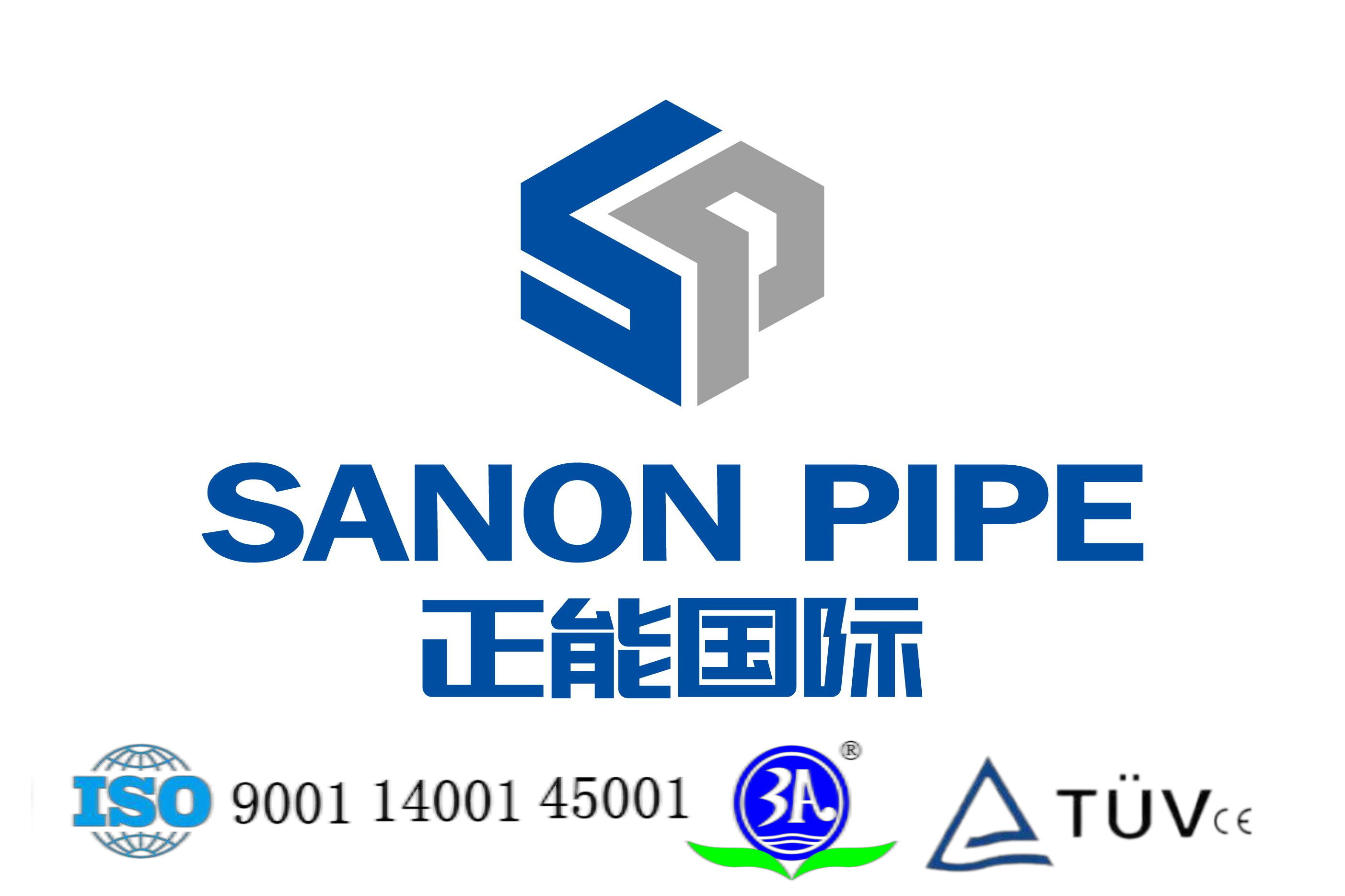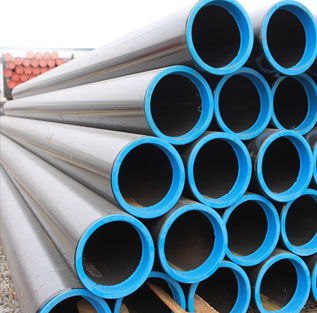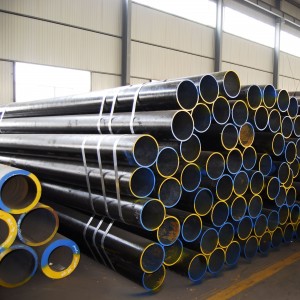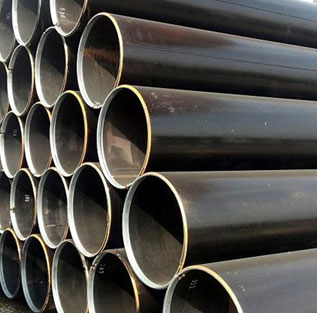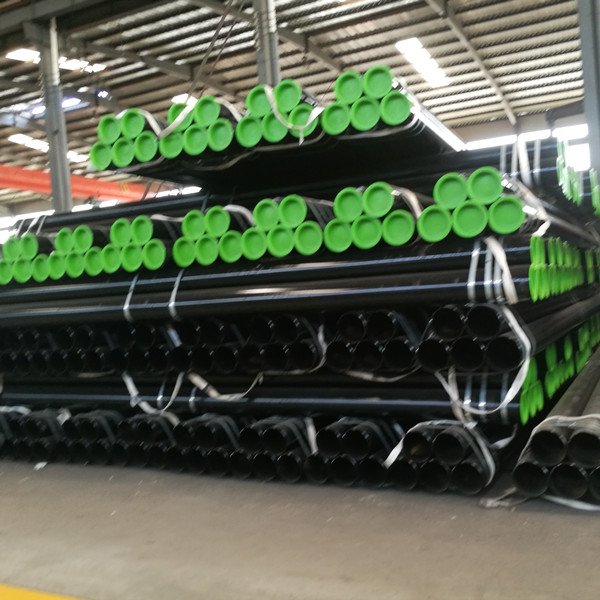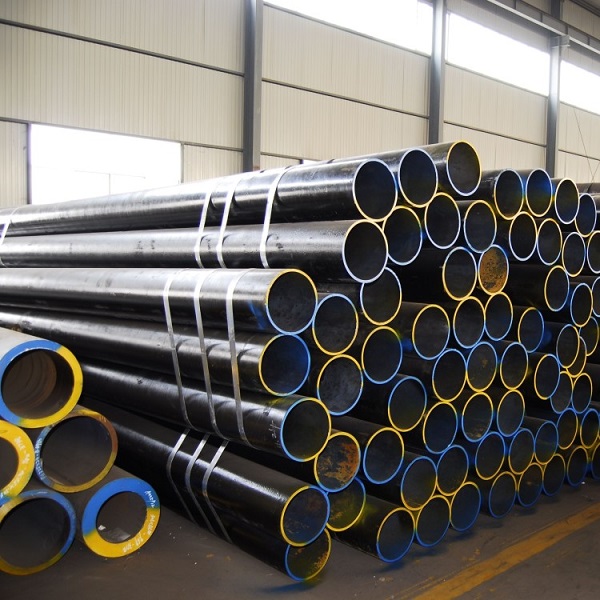Reasonable price for China Ductile Seamless Cast Iron Steel Boiler Tube Price Black Iron Pipe
Overview
Dependable high-quality and good credit rating standing are our principles, which will help us at a top-ranking position. Adhering into the tenet of "quality first, consumer supreme" for Boiler Pipe, We guaranteed quality, if shoppers were not happy with the products' high-quality, you can return inside 7days with their original states. We believe that good business relationships will lead to mutual benefits and improvement for both parties. We now have established long-term and successful cooperative relationships with many customers through their confidence in our customized services and integrity in doing business. We also enjoy a high reputation through our good performance. Better performance is going to be expected as our principle of integrity. Devotion and Steadiness will remain as ever.
Boiler pipe all required NDT to ensure there is not quality defect that will cause potential risk. The NDT include many test method, therein, Ultrosonic, X-Ray, Eddy Current and Magnetic Flux Leakage is mostly been used, although they all are been used to inspect the defects like pits, pores, inclusions, cracks, but they have different advantage that suitable different defect test:
Ultrosonic
Suitable for many different material; have advantage that test inside defects like no fusion, crack, delamination, the detection rate is high; has high penetration force, can be used to detect the internal defects of specimens in a larger thickness range; the defect location is accurate; high sensitivity, it can detect the defects of small size inside the specimen; low cost, fast speed, light equipment, harmless to human body and environment, easy to use on site
But it is difficult to make precise qualitative and quantitative analysis of the defects in specimens; difficult to detect the specimen with complex shape or irregular shape; the location, orientation and shape of the defect have certain influence on the detection result; material and grain size have great influence on detection; the results are not intuitive and there is no direct witness record of the test results when the manual A-type pulse reflection method is used
X-Ray
Like ultrosonic, they are both been used to inspect inside defects, X-ray mostly been used to inspect weld seam and cast product, especially weld seam, can effectively detect the volume defects such as porosity, slag inclusion and porosity, but it is difficult to detect the area defects such as delamination and crack. X-ray can directly observe the size, location and nature of the defect, but it is not sensitive to the area defect, and the detection accuracy will be reduced if the defect orientation and ray direction angle are not appropriate even impossible to detect, and the cost is high, the operation is complex
Eddy Current
Eddy Current and Magnetic Flux Leakage both don't have much reuqirement about surfact quality, and detected signal is an electrical signal, which can be digitally processed to facilitate storage, reproduction and data comparison and processing. It has a high detection sensitivity and a good linear indication in a certain range for defects on or near the surface of the workpiece, which can be used for quality management and control; can be tested at high temperature, narrow area of workpiece and deep hole wall (including tube wall); nonmetallic materials that can induce eddy currents can be tested, such as graphite; during detection, the coil does not need to contact the workpiece or coupling medium, so the detection speed is fast.
But the subject must be conductive and is only suitable for detecting metal surface defects; the detection depth and detection sensitivity are contradictory. When conducting ET on a material, it is necessary to make comprehensive consideration according to the material, surface state and inspection standard, and then determine the detection scheme and technical parameters; when the through-coil is used for ET, the specific position on the circumference of the defect cannot be determined; difficult to detect specimens with complex shapes
Magnetic Flux Leakage
Same as Eddy Current, don't have much reuqirement about surfact quality, and detected signal is an electrical signal, which can be digitally processed to facilitate storage, reproduction and data comparison and processing. Initial quantification of defects can be achieved.This quantization can not only realize the judgment of defects, but also make a preliminary assessment of the degree of harm of defects; for pipes with wall thickness less than 30mm, it can simultaneously detect internal and external wall defects; because it is easy to be automated, high detection efficiency and no pollution can be obtained
But only applicable to ferromagnetic materials.Because magnetization is the first step of magnetic flux leakage detection, the permeability of non-ferromagnetic materials is close to 1, and the magnetic field around the defect will not change due to different permeability, so magnetic flux leakage will not occur; strictly speaking, magnetic flux leakage testing cannot detect defects in ferromagnetic materials.If the distance between the defect and the surface is large, the magnetic field distortion around the defect mainly appears around the defect, while the workpiece surface may not have magnetic leakage.; magnetic flux leakage testing is not suitable for testing specimens with coated or overlaid surfaces; magnetic flux leakage detection is not suitable for the specimen with complex shape.Magnetic leakage detection uses sensors to collect magnetic leakage communication signals, and the slightly complicated specimen shape is not conducive to detection; magnetic flux leakage detection is not suitable for detecting narrow cracks, especially closed cracks.
Application
It is mainly used to make high-quality carbon structural steel, alloy structural steel and stainless heat-resistant steel seamless steel pipes for high pressure and above steam boiler pipes.
Mainly used for high pressure and high temperature service of boiler(Superheater tube, reheater tube, air guide tube, main steam tube for high and ultra high pressure boilers). Under the action of high temperature flue gas and water vapor, the tube will oxidize and corrode. It is required that the steel pipe has high durability, high resistance to oxidation and corrosion, and good structural stability.
Main Grade
Grade of high-quality carbon structural steel: 20g、20mng、25mng
Grade of alloy structural steel: 15mog、20mog、12crmog、15crmog、12cr2mog、12crmovg、12cr3movsitib, etc
Grade of rust-resistant heat-resistant steel: 1cr18ni9 1cr18ni11nb
Chemical Component
| Grade |
Quality Class |
Chemical Property |
||||||||||||||
|
C |
Si |
Mn |
P |
S |
Nb |
V |
Ti |
Cr |
Ni |
Cu |
Nd |
Mo |
B |
Als" |
||
|
不大于 |
不小于 |
|||||||||||||||
| Q345 | A |
0.20 |
0.50 |
1.70 |
0.035 | 0.035 |
0.30 |
0.50 |
0.20 |
0.012 |
0.10 |
— | — | |||
| B | 0.035 | 0.035 | ||||||||||||||
| C | 0.030 | 0.030 |
0.07 |
0.15 |
0.20 |
0.015 |
||||||||||
| D |
0.18 |
0.030 | 0.025 | |||||||||||||
| E | 0.025 | 0.020 | ||||||||||||||
| Q390 | A |
0.20 |
0.50 |
1.70 |
0.035 | 0.035 |
0.07 |
0.20 |
0.20 |
0.3。 |
0.50 |
0.20 |
0.015 |
0.10 |
— | — |
| B | 0.035 | 0.035 | ||||||||||||||
| C | 0.030 | 0.030 |
0,015 |
|||||||||||||
| D | 0.030 | 0.025 | ||||||||||||||
| E | 0.025 | 0.020 | ||||||||||||||
| Q42O | A |
0.20 |
0.50 |
1.70 |
0.035 | 0.035 |
0.07 |
0.2。 |
0.20 |
0.30 |
0.80 |
0.20 |
0.015 |
0.20 |
— |
— |
| B | 0.035 | 0.035 | ||||||||||||||
| C | 0.030 | 0.030 |
0.015 |
|||||||||||||
| D | 0.030 | 0.025 | ||||||||||||||
| E | 0.025 | 0.020 | ||||||||||||||
| Q46O | C |
0.20 |
0.60 |
1.80 |
0.030 | 0.030 |
0.11 |
0.20 |
0.20 |
0.30 |
0.80 |
0.20 |
0.015 |
0.20 |
0.005 |
0.015 |
| D | 0.030 | 0.025 | ||||||||||||||
| E | 0.025 | 0.020 | ||||||||||||||
| Q500 | C |
0.18 |
0.60 |
1.80 |
0.025 | 0.020 |
0.11 |
0.20 |
0.20 |
0.60 |
0.80 |
0.20 |
0.015 |
0.20 |
0.005 |
0.015 |
| D | 0.025 | 0.015 | ||||||||||||||
| E | 0.020 | 0.010 | ||||||||||||||
| Q550 | C |
0.18 |
0.60 |
2.00 |
0.025 | 0,020 | 0.11 |
0.20 |
0.20 |
0.80 |
0.80 |
0.20 |
0.015 |
0.30 |
0.005 |
0.015 |
| D | 0.025 | 0,015 | ||||||||||||||
| E | 0.020 | 0.010 | ||||||||||||||
| Q62O | C |
0.18 |
0.60 |
2.00 |
0.025 | 0.020 |
0.11 |
0.20 |
0.20 |
1.00 |
0.80 |
0.20 |
0.015 |
0.30 |
0.005 |
0.015 |
| D | 0.025 | 0.015 | ||||||||||||||
| E | 0.020 | 0.010 | ||||||||||||||
| Except for Q345A and Q345B grades, the steel should contain at least one of the refined grain elements Al, Nb, V, and Ti. According to the needs, the supplier can add one or more refined grain elements, the maximum value Should meet the requirements in the table. When combined, Nb + V + Ti <0.22% °For Q345, Q390, Q420 and Q46O grades, Mo + Cr <0.30% oWhen each grade of Cr and Ni is used as the residual element, the content of Cr and Ni should not be more than 0.30%; when it needs to be added, its content should meet the requirements in the table or be determined by the supplier and the buyer through consultation.J If the supplier can guarantee that the nitrogen content meets the requirements in the table, the nitrogen content analysis may not be performed. If Al, Nb, V, Ti and other alloy elements with nitrogen fixation are added to the steel, the nitrogen content is not limited. The nitrogen fixation content should be specified in the quality certificate.
'When using all aluminum, the total aluminum content AIt ^ 0.020% B |
||||||||||||||||
Mechanical Property
|
No |
Grade |
Mechanical Property |
||||
|
|
|
Tensile |
Yield |
Extend |
Impect (J) |
Handness |
|
1 |
20G |
410- |
≥ |
24/22% |
40/27 |
— |
|
2 |
20MnG |
415- |
≥ |
22/20% |
40/27 |
— |
|
3 |
25MnG |
485- |
≥ |
20/18% |
40/27 |
— |
|
4 |
15MoG |
450- |
≥ |
22/20% |
40/27 |
— |
|
6 |
12CrMoG |
410- |
≥ |
21/19% |
40/27 |
— |
|
7 |
15CrMoG |
440- |
≥ |
21/19% |
40/27 |
— |
|
8 |
12Cr2MoG |
450- |
≥ |
22/20% |
40/27 |
— |
|
9 |
12Cr1MoVG |
470- |
≥ |
21/19% |
40/27 |
— |
|
10 |
12Cr2MoWVTiB |
540- |
≥ |
18/-% |
40/- |
— |
|
11 |
10Cr9Mo1VNbN |
≥ |
≥ |
20/16% |
40/27 |
≤ |
|
12 |
10Cr9MoW2VNbBN |
≥ |
≥ |
20/16% |
40/27 |
≤ |
Tolerance
Wall Thickness and Outter Diameter:
If there is no special requirements, pipe gonna be delivery as norminal outter diameter and norminal wall thickness. As follow sheet
|
Classification designation |
Method of manufacture |
Size of pipe |
Tolerance |
|||
|
Normal grade |
High grade |
|||||
|
W H |
Hot Rolled(extrude) pipe |
Norminal outter Diameter (D) |
<57 |
士 0.40 |
±0,30 |
|
|
57 〜325 |
SW35 |
±0.75%D |
±0.5%D |
|||
|
S>35 |
±1%D |
±0.75%D |
||||
|
>325 〜6。。 |
+ 1%D or + 5.Take lesser one一2 |
|||||
|
>600 |
+ 1%D or + 7,Take lesser one一2 |
|||||
|
Norminal Wall Thickness (S) |
<4.0 |
±|・丨) |
±0.35 |
|||
|
>4.0-20 |
+ 12.5%S |
±10%S |
||||
|
>20 |
DV219 |
±10%S |
±7.5%S |
|||
|
心219 |
+ 12.5%S -10%S |
土 10%S |
||||
|
W-H |
Thermal expansion pipe |
Norminal outter Diameter
(D) |
all |
±1%D |
±0.75%。 |
| Norminal Wall Thickness
(S) |
all |
+ 20%S -10%S |
+ 15%S -io%s |
||
|
W-C |
Cold drawn(rolled) Ppipe |
Norminal outter Diameter
(D) |
<25.4 |
±'L1j |
— |
|
>25.4 〜4() |
±0.20 |
||||
|
>40 〜50 |
|:0.25 |
— |
|||
|
>50 〜60 |
±0.30 |
||||
|
>60 |
±0.5%D |
||||
|
Norminal Wall Thickness (S) |
<3.0 |
±0.3 |
±0.2 |
||
|
>3.0 |
S |
±7.5%S |
Length:
The usual length of steel pipes is 4 000 mm ~ 12 000 mm. After consultation between the supplier and the buyer, and fill in the contract, it can be delivered steel pipes with a length greater than 12 000 mm or shorter than I 000 mm but not shorter than 3 000 mm; short length The number of steel pipes less than 4,000 mm but not less than 3,000 mm shall not exceed 5% of the total number of steel pipes delivered
Delivery weight:
When the steel pipe is delivered according to the nominal outer diameter and nominal wall thickness or the nominal inner diameter and nominal wall thickness, the steel pipe is delivered according to the actual weight. It can also be delivered according to the theoretical weight.
When the steel pipe is delivered according to the nominal outer diameter and minimum wall thickness, the steel pipe is delivered according to the actual weight; the supply and demand parties negotiate. And it is indicated in the contract. The steel pipe can also be delivered according to the theoretical weight.
Weight tolerance:
According to the requirements of the purchaser, after consultation between the supplier and the purchaser, and in the contract, the deviation between the actual weight and the theoretical weight of the delivery steel pipe shall meet the following requirements:
a) Single steel pipe: ± 10%;
b) Each batch of steel pipes with a minimum size of 10 t: ± 7.5%.
Test Requirement
Hydraustatic Test:
The steel pipe should be tested hydraulically one by one. The maximum test pressure is 20 MPa. Under the test pressure, the stabilization time should be not less than 10 s, and the steel pipe should not leak.
After the user agrees, the hydraulic test can be replaced by eddy current testing or magnetic flux leakage testing.
Nondestructive Test:
Pipes that require more inspection should be ultrasonically inspected one by one. After the negotiation requires the consent of the party and is specified in the contract, other non-destructive testing can be added.
Flattening Test:
Tubes with an outer diameter greater than 22 mm shall be subjected to a flattening test. No visible delamination, white spots, or impurities should occur during the entire experiment.
Flaring Test:
According to the requirements of the purchaser and stated in the contract, the steel pipe with outer diameter ≤76mm and wall thickness ≤8mm can be done flaring test . The experiment was performed at room temperature with a taper of 60 °. After the flaring, the flaring rate of the outer diameter should meet the requirements of the following table, and the test material must not show cracks or rips
|
Steel Type
|
Outter diameter flaring rate of steel pipe/% |
||
|
Inner Diameter/Outter Diameter |
|||
|
<0.6 |
>0.6 〜0.8 |
>0.8 |
|
|
High-quality carbon structural steel |
10 |
12 |
17 |
|
Structural alloy steel |
8 |
10 |
15 |
| •The inner diameter is calculated for the sample. | |||
